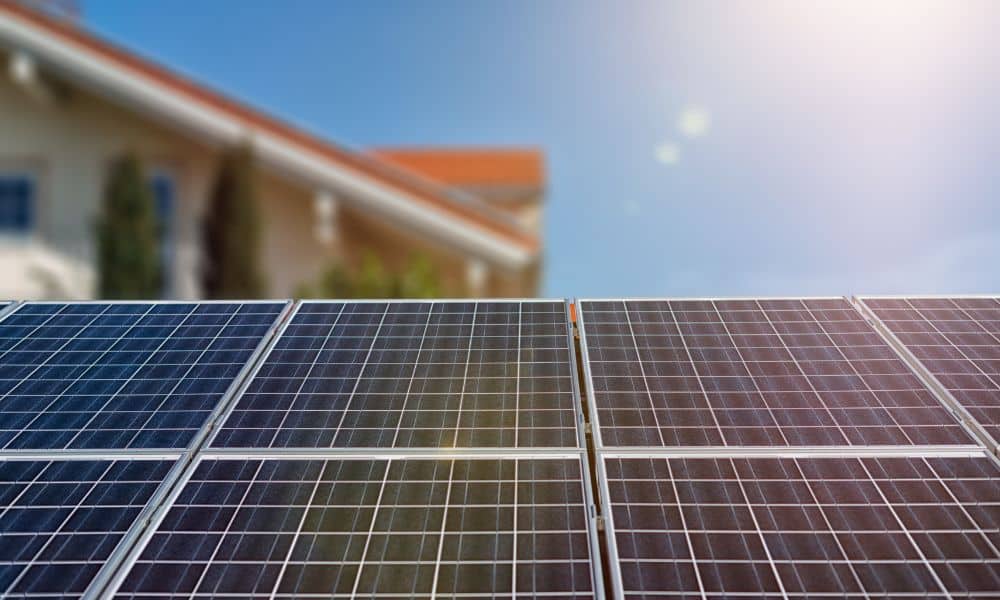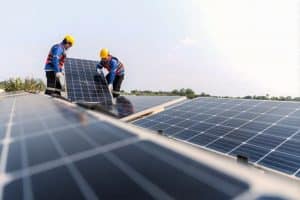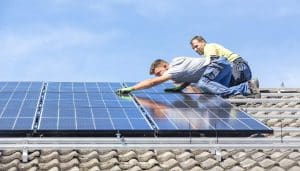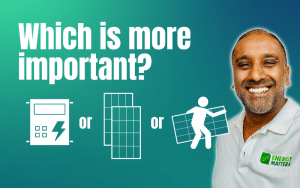We recently covered the orientation of solar panels on roofs in Australia. We explored the benefits of north-facing roofs and panels and how to work with other roof orientations. Something we are often asked is about the tilt of the solar panels. Is the quest for the optimal angle of your solar panels really going to make a difference? Let’s take a look at what it means to tilt solar panels and whether it’s worth the effort and cost.
What does solar panel tilt mean?
Most Australian homes have angled roofs. Your home likely has a pitch between 20 and 30 degrees. Attaching solar panels to your roof, without any modifications, will mean that the tilt of the panel will match the tilt of your roof. But this isn’t always the ideal tilt to really capture the sun for maximum efficiency and output.
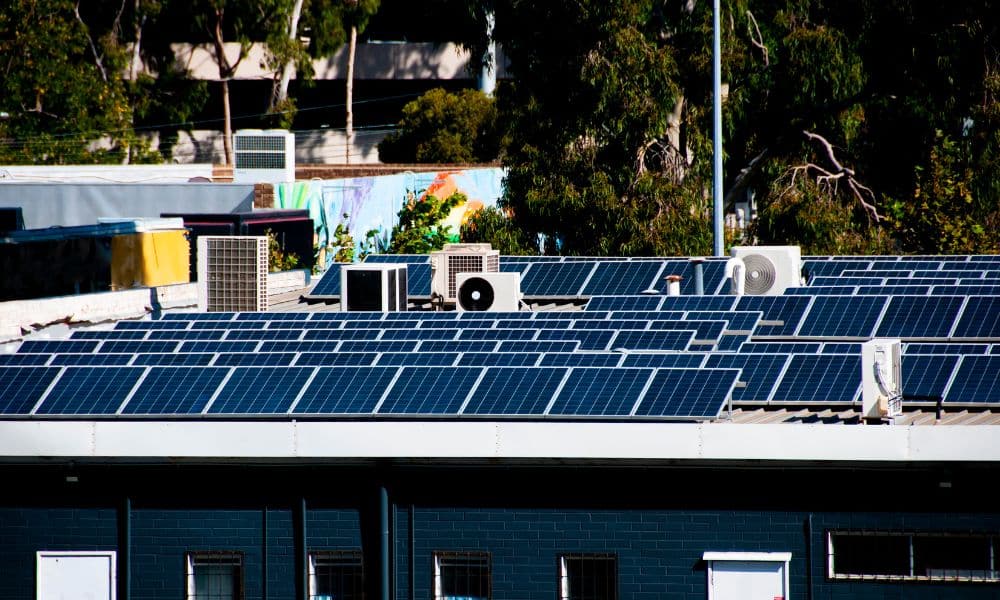
What tilt should solar panels be?
The optimal tilt of your solar panels will vary depending on where you live in Australia. Here’s a quick guide to Australia’s capital cities:
| State Capital | Optimal Panel Angle |
| Melbourne | 37.8° |
| Sydney | 33.9° |
| Hobart | 42.9° |
| Adelaide | 34.9° |
| Perth | 31.9° |
| Darwin | 12.5° |
| Brisbane | 27.5° |
| Canberra | 35.3° |
As you can see, the optimal tilt for solar panels across Australia varies significantly. The further north you go, the lower the angle. The further south you go, the angle increases. This means that Perth residents differ greatly from residents in Broome.
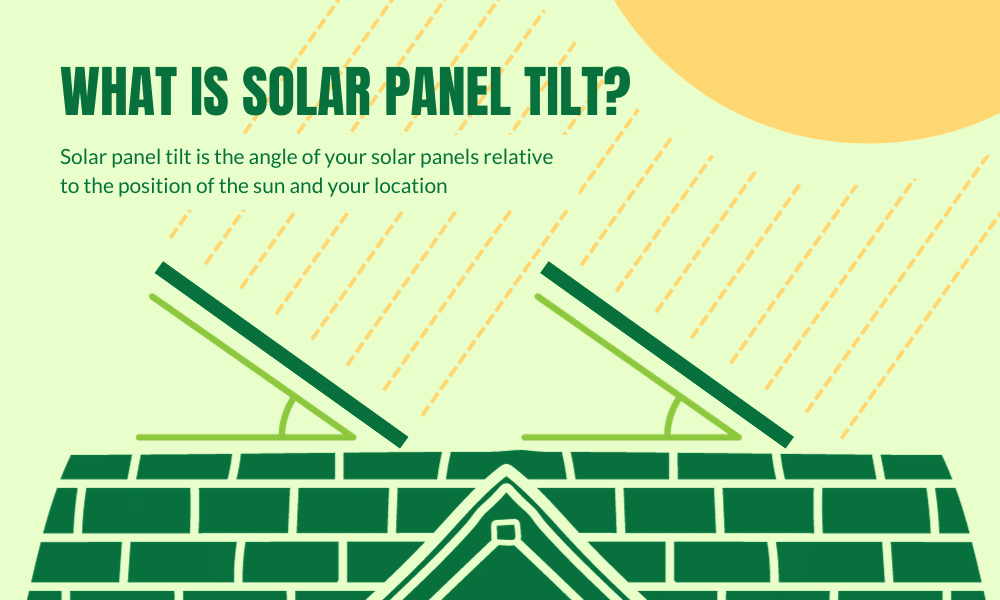
The angle of your panels is determined by the latitude of your home or business. You can use this simple latitude and longitude finder (enter your suburb). Find the Latitude and Longitude coordinates. It should look something like this:
-37.840935, 144.946457 (Melbourne, Australia)
The first set of numbers is the latitude, in this example, it is -37.840935. Rounding up, we get 37.8°. This is the optimal solar panel angle for Melbourne homes and businesses.
Does the angle of my solar panels matter in summer and in winter?
As the earth rotates, we not only get our changing seasons but the angle of the sun also changes. This means that the optimal angle of your panels changes vastly across the year.
In summer, the optimal angle decreases by 15 degrees (latitude -15°)
In winter, the optimal angle increases by 15 degrees (latitude +15°).
Now, unless you have the means and the resolve, you won’t be changing the tilt of your panels as the season changes. You need to consider your household and business usage across the year when installing solar. If you aim to optimise your panels for winter use, then increasing the angle might be considered. The opposite may be considered for summer optimisation.
The pitch of my roof and solar panel tilt needs do not match. What do I do?
Worry not, your solar installer will have a solution to your tilting woes. The solution comes in the form of solar panel tilt mounting brackets. The brackets can be adjusted to the optimal tilt of your home or business. You have likely seen these tilt brackets on the flat roofs of businesses, but they are not as commonly used on homes. You can install electric brackets that move according to the angle of the sun, but these can add a significant cost to your solar installation.
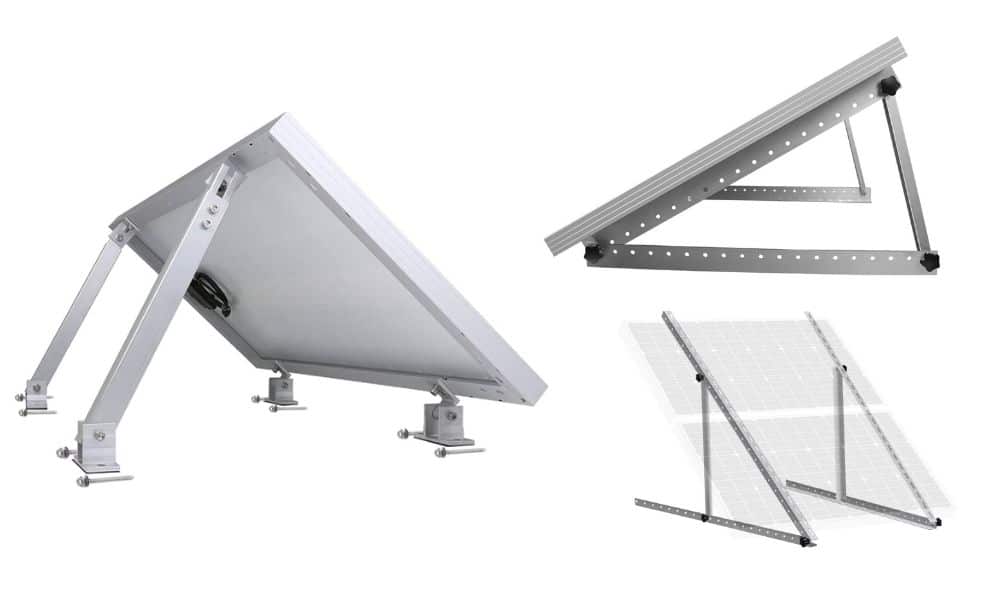
How much will tilting my solar panels add to my solar savings?
The return on investment is the number one reason for considering the angle of your panels. If the tilt of your panels is between 10-15 degrees lower or greater than the latitude of your home or business then you can expect a reduction of efficiency of between 1-1.5%. What does this mean fiscally? It really depends on the size of your system. A 3kW system will likely see a loss of around $50 of potential solar across the year. This means that optimising your solar panel angle will add to your savings, and achieve an ever-so-slightly faster return on investment.
Do I need to tilt my solar panels?
The simplest answer for most Australian homes is ‘No’.
Save for flat roofs, or homes that will greatly benefit from increased angles (we’re looking at you, Tasmania), the benefit of tilting panels is usually outweighed by the cost. Solar panel tilt mounting brackets are not a stock-standard part of a solar installation. You’ll be looking at anywhere from $500 to $1000+ for the addition of mounting brackets.
You must also consider the shade the tilted panels cast onto each other. Space must be left between the panels, which means that precious roof space will be reduced. This usually means fewer panels can be installed, which results in a smaller system. You won’t be increasing the size of your roof any time soon!
All in all, unless absolutely necessary, solar panels will function perfectly fine mounted flush to your roof. If you do have the space and the resources, then installing solar panels at the optimal angle for your location is certainly going to benefit your bottom line.
Your solar installer will recommend the best option for your home or business. Energy Matters can connect you with up to 3 installers in your area who will provide you with FREE quotes. Begin your solar journey today – click the button below to get started!









